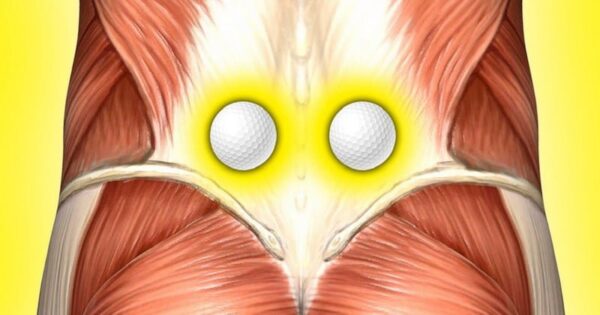6 Simple and Effective Tips to Relieve Lower Back Pain

Lower back pain is a common problem that affects millions of people around the world. Whether it’s caused by a sedentary lifestyle, poor posture, lifting heavy objects, or stress, it can seriously impact your daily life and overall well-being. Unfortunately, in many cases, there is no single, clear-cut treatment for lower back pain, and approaches often differ from one doctor to another.
Some healthcare professionals recommend increased physical activity, while others suggest minimizing movement and getting plenty of rest. This difference in opinion often leaves patients confused about what’s actually best for them.
However, one thing is clear: you should never ignore back pain or rely on guesswork. Even though it may seem minor at first, untreated lower back pain can become chronic and harder to manage.
Let’s explore six of the most effective, simple tips to manage and relieve lower back pain naturally and safely.
1. Don’t Wait for the Pain to Go Away on Its Own
Many people assume that back pain is just temporary and will pass with time. While this is sometimes true, it’s not always the case. If your pain lasts longer than two weeks, it’s time to consult a doctor.
Ignoring persistent pain may allow an underlying issue to worsen, especially if it’s related to a herniated disc, spinal misalignment, or muscular strain. Early intervention can prevent complications and help you recover faster.
Takeaway: If your back has been hurting for more than 14 days, don’t delay—seek medical advice.
2. Avoid Home Remedies That May Make It Worse
A common mistake many patients make is trying to treat lower back pain with heat or ice, without really knowing which is appropriate. While hot compresses can relax tight muscles and cold packs can reduce inflammation, using either incorrectly may worsen your condition.
For example, applying ice for too long can stiffen muscles, while excessive heat may increase swelling if the injury is recent. Also, home massages or over-the-counter creams may only provide temporary relief but won’t solve the root of the problem.
Takeaway: Avoid self-treatment based on guesswork. Always consult a healthcare provider before applying home therapy techniques.
3. Avoid Lifting Heavy Objects
This might sound obvious, but it’s often ignored. If you’re experiencing lower back pain, you should completely avoid lifting heavy items, including grocery bags, furniture, or even children.
Lifting puts additional pressure on the spine and surrounding muscles. Even if you feel strong enough, one wrong movement can aggravate the condition, cause muscle tears, or damage your spinal discs.
Takeaway: Until your back is fully healed, stay away from any activity that requires heavy lifting or sudden twisting movements.
4. Strengthen Your Back Muscles with the Right Exercises
Contrary to the idea of complete bed rest, gentle and guided exercise is often one of the best long-term solutions for lower back pain. Strengthening the muscles around your spine helps support your body and reduces the risk of future injury.
However, it’s essential to choose the right exercises. Not all workouts are suitable for everyone, and doing the wrong ones may worsen your pain. That’s why consulting a physical therapist or doctor is key—they can recommend exercises tailored to your specific condition.
Common beneficial movements include:
Gentle stretching
Core strengthening exercises
Low-impact yoga or Pilates
Walking or light swimming
Takeaway: Talk to your doctor about safe back exercises that can help build strength and improve mobility.
5. Fix Your Posture – Don’t Bend or Slouch
One of the most common, yet overlooked, causes of back pain is poor posture. Whether you’re sitting at a desk, standing in line, or scrolling through your phone, your body posture directly affects your spine health.
Slouching or leaning forward for extended periods places extra stress on your lower back muscles and spinal discs, causing discomfort and stiffness over time.
To prevent this:
Sit upright with your feet flat on the floor
Keep your back supported with a chair that has good lumbar support
Avoid hunching over your phone or laptop
Takeaway: Proper posture is essential—make it a habit to sit and stand correctly to protect your spine.
6. Don’t Obsess Over the Diagnosis
It may sound counterintuitive, but focusing too much on your diagnosis can actually slow down recovery. Sometimes, doctors label back pain as “non-specific”—which means that no clear cause can be identified. This can be frustrating, but it’s more common than you might think.
Instead of worrying about what exactly is wrong, focus on early and consistent treatment, including pain management, movement, and lifestyle adjustments. The goal is to manage symptoms and restore function, even when a specific cause is not found.
Takeaway: Don’t get stuck on labels. Stay proactive and consistent with treatment, even when the diagnosis is unclear.
About kop.ge – Your Guide to Natural Health and Wellness
At kop.ge, we are dedicated to helping you take care of your health, beauty, and daily needs through practical and affordable home-based solutions. Our platform provides natural remedies and tips that are easy to follow, effective, and designed for everyday use.
We believe that you don’t need expensive treatments or products to stay healthy, feel beautiful, or manage your household efficiently. Most of the time, the answers are already in your kitchen, garden, or home pantry.
Many of the tips you’ll find on our website can become part of your daily routine. Share them with your friends and family to help others simplify their lives and take control of their health naturally.
Please note:
While all our content is safe and well-researched, we always recommend consulting with a healthcare professional before starting any treatment—especially for medical conditions such as back pain.












